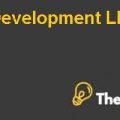
Background of the Company
Polaris, a company, designed to manufacture Motorsport products started its operations in 1954. The product line of Polaris included products like ATV’s, Side-by-Sides and snowmobiles, and was facing intense competition from players like Yamaha, Honda, Harley Davidson etc. the whole market was worth $10 billion and the share of Polaris was estimated approximately $2 billion. Around 85% of the consumer base of Polaris was residing in North America, but the international market growth was also becoming attractive for the company. The distribution network of the company was catering the U.S and the rest of the world with the majority of the distributors (around 1500) were serving the United states market while 1000 distributors were serving the international market. The company was deeply involved in serving the Motorsport market with the brands like snowmobile, launched in 1950, ATV introduced to the market in 1985 and Side-by-Side off road vehicle in 1998 which became the highest revenue generator for the company.
The dominance of Polaris in ORV market was becoming prominent and in 2010, this segment generated 69% of the Polaris total sales. The company’s revenue was on an increasing trend in 2010 with an expected growth of 8-11% in 2011. The company’s major success was its brand Victory and was expected to leverage the success of the brand to enter the potentially growing market. The company made huge investments in marketing to create brand awareness in the Latin American and Asian markets. The company saw huge success in the recent years due to its diverse approach and is expecting to grow in the years to come, from shifting its manufacturing abilities to low-cost countries to gain cost benefit.
Problem Diagnosis
The company was aiming to shift its production and manufacturing structures to a country where the company can get the cost benefit. The reasons for this shift in approach was due to the economic slowdown in U.S that was hurting the profit margins of Polaris a great deal. The options under consideration were China and Mexico as the vice president of operations and integrations was of the view that many companies are shifting manufacturing abilities to these countries to gain low labor and manufacturing cost. Quality concerns were there from shifting abilities to these locations, but the company will be able to gain low labor cost. On the other hand, keeping the manufacturing close to the customers will benefit with low transport cost, but the lack of technically skilled labor in the US was a concerning factor. The vice president had to choose between low labor cost and low transportation cost. Besides this, if the company considers the option of choosing a foreign country for manufacturing, it still needs to select which country it should select from the suggested options.
Alternatives
The alternatives for the company are the options that the vice president is considering that includes staying in North America, or moving to a foreign country by choosing from the underline options of China and Mexico.
Alternative # 1: Staying in North America
Staying in North America will give the company the benefit of gaining low transportation cost by staying close to the customers. The company can also use leverage on its existing distribution network in the US with over 1500 distributors and increase its sales volume in the current market for the side-by-side segment. The segment also has high demands in the US market and shifting manufacturing from the US will result in the layoff of employees and the company will have to pay $20,000 to each workers as a severance. On the other hand, the company is expecting high sales volume from foreign markets and lack of skilled labor in the US is also a concerning factor for the company.
Alternative # 2: Going to Mexico
Mexico will provide the company with many qualitative advantages due to the closeness with US. Due to this factor collaboration between the Polaris staff and the workers at the manufacturing facility will be high and was giving the company an advantage. The cultures are almost the same with very minimal differences that will also increase the collaboration. On the other hand, sales growth is expected from international markets and staying close to US may restrict the company from serving the international demand.
Alternative # 3: Going to China
China offers low cost, but the annual increase in labor cost is high which will not give the company the comfort of low cost for a longer period. The transportation cost, delivery time and capital investment are the biggest concerns while starting manufacturing in China. On the other hand, the Asian market is expected to be a growing market for side-by-side segment and manufacturing in China will keep the company at a benefit for the possible future growth.................
This is just a sample partial case solution. Please place the order on the website to order your own originally done case solution.













